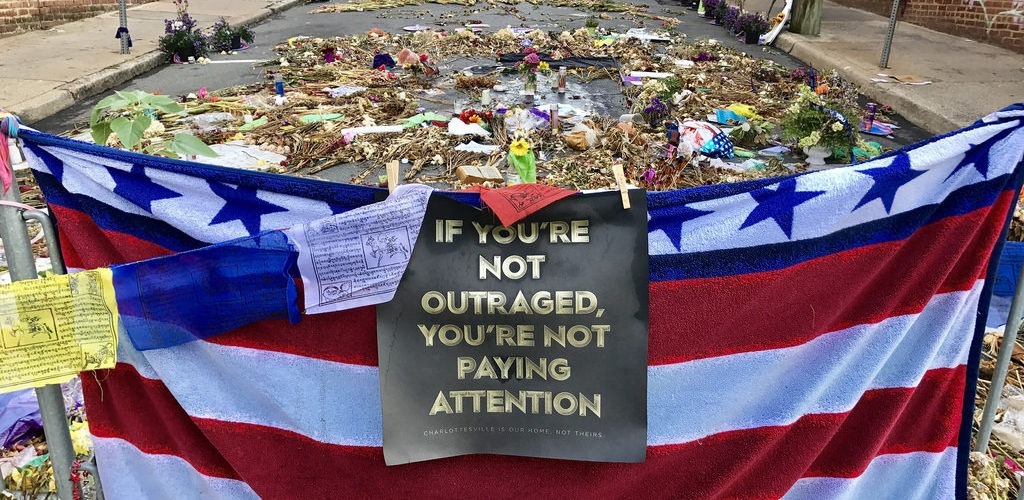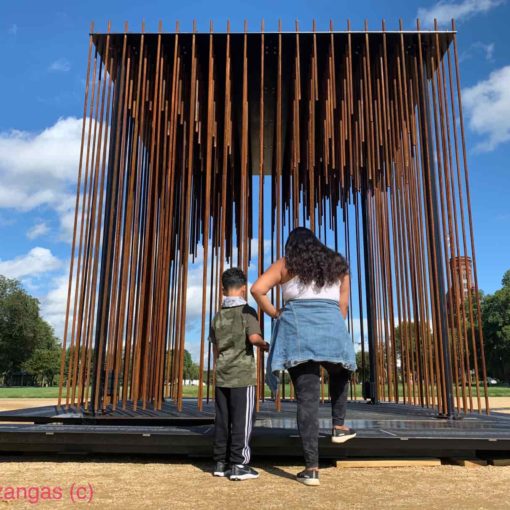On Thursday morning, I stepped into the Charlottesville courtroom of Judge Richard E. Moore and witnessed the first actual day of trial for James Alex Fields, Jr., the Ohio man who drove his Dodge Challenger into a crowd of anti-racist counter-protesters at the white supremacist rally in August 2017. Fields is responsible for the serious injury of many and the killing of Heather Heyer, 32, in this fairly progressive college town in central Virginia. His defense attorney admitted as much in his opening statement, saying that he “will not contest much of the testimony of the witnesses” brought to court by government prosecutors. Instead, this trial is about why his client felt he had no choice but to accelerate into a large group gathered near the intersection of 4th and Water Streets in downtown Charlottesville.
Fields sat emotionless at the defense table in a navy sweater over a collared shirt, a layer of stubble on his face. He also wore dark glasses and his eyes looked exhausted underneath. Heather Heyer’s mom, Susan Bro, sat in the front row behind the prosecutor’s table, supported by dozens of people in attendance who at times embraced her.
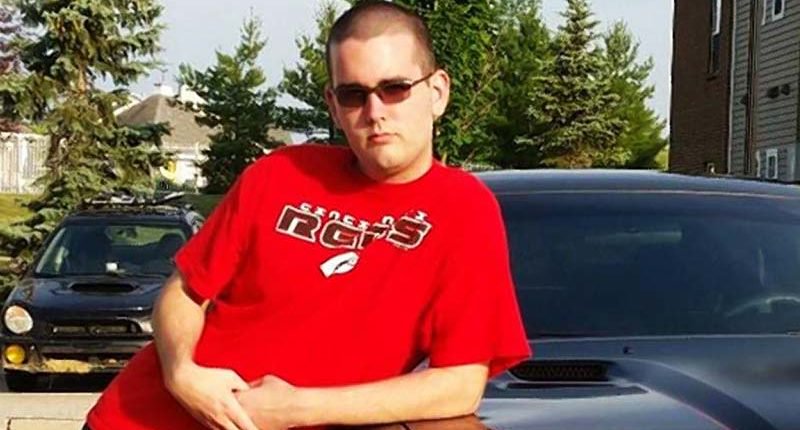
After a few days of jury selection, 16 individuals, including four alternates, sat attentively in the jury box directly in front of Judge Moore. Among them is only one black man, all 15 of the others are white. When I arrived the last portion of basic jury instructions were being recited to them. The courtroom was mostly full. The jury was not to be sequestered, they were not to talk about the case to each other outside of the jury room, and they were not to read or listen to any media accounts of the trial. Months earlier, the defense had tried but failed to have the trial moved out of Charlottesville.
At Charlottesville Circuit Court, all personal electronic devices were banned from the building during trial. I knew this ahead of time, so my cellphone remained in the glove box of my car. Outside of the courthouse on East High Street, TV cameras and microphones lined the sidewalk, and several news vans were parked nearby.
After a short break, the trial officially began with opening arguments. As is the custom, the prosecution–in this case the Commonwealth of Virginia–went first. The prosecutor described Fields as someone who followed white supremacist and neo-Nazi groups online from his home in Ohio, and that the day before the Unite the Right Rally, he drove directly to central Virginia. Having arrived in Charlottesville shortly after 3 am on August 12, 2017, he soon met up with attendees of the Unite the Right Rally to begin later that morning. A couple of months previously, the prosecutor said, Fields had posted a disturbing graphic on his Instagram account of a car being driven into a crowd labeled as protesters. On the day of the crime, after the Unite the Right Rally had been declared an unlawful assembly by law enforcement authorities and the groups were dispersing, she said Fields sat in his silver Challenger alone on a hill above a crowd of counter-protesters marching away from him, and he watched with his car idling. He was not being threatened, his car was not being attacked, when he then revved his engine and dashed his vehicle into the crowd. Many of those injured would be testifying, promised the prosecutor.
The 21-year-old neo-Nazi faces five felony counts of malicious wounding, three counts of aggravated malicious wounding, and one count of failing to stop at an accident involving a death. Furthermore, Fields has been charged with hate crimes in a 30-count federal indictment. His espousing white supremacist ideals and visceral hatred for minorities has been document. The prosecutor closed her opening statement by saying that Fields chose to kill in Charlottesville, not drive away from the rally peacefully. He furthermore did not immediately stop when a police car began pursuing him immediately after the crime.
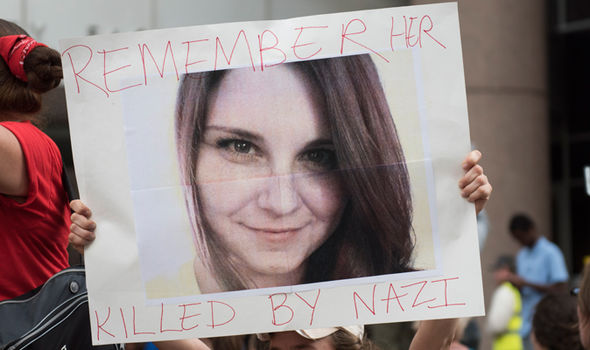
Field’s lead defense attorney began his opening statement by saying he expected that there will be few matters of fact the two legal teams will disagree on during the next two and a half weeks of witness testimony. His speech was uneven, sometimes dropping the end of his sentences to a mere mumble, which was extremely difficult for observers to hear.
“Yes, Mr. Fields was operating the vehicle when it struck Heather Heyer and the others,” the defense attorney said. “And, so, you are asking, why are we here?” He then went on to explain that this case was about the “why” of his client’s actions. As the defense attorney described it, when Fields arrived for the rally, he saw rising tensions among protesters and counter-protesters, was “hassled” by several counter-protesters as the rally was about to begin, and then once the rally was cancelled and the dispersal began, he had supposedly made lunch plans with three other right-wing attendees. He said a couple of those individuals will testify as to that arrangement. However, these individuals then went separate ways to retrieve their vehicles, and Fields headed toward the area of 4th Street and the downtown pedestrian mall.
Defense argued that Fields felt directly threatened, saw individuals flashing firearms, and instead of leaving the downtown area altogether, stayed inside his vehicle watching a large group of counter-protesters from behind. His intent, defense said, was not malicious when the criminal act occurred, rather it was one of “self-preservation.”
Following a twenty-minute break after the opening statements, I stayed for the first two government witnesses, Michael Webster and Marcus Martin.
Michael Webster had spent the morning of August 12, 2017 at his girlfriend’s home watching news reports and social media posts. She lived further from downtown than him and wanted him to stay with her that weekend, because she was concerned about the violence that began with the Nazi tiki-torch march the evening before. However, about an hour after the Unite the Right Rally was cancelled and apparently dispersed, the couple decided to go downtown and support local businesses–perhaps have lunch at a restaurant they were familiar with near the pedestrian mall.
Around 1:30 pm, the couple parked in a free parking space Webster had at his place of work and began walking. This was when they first saw Field’s car idling near the top of a hill, and they walked in front of it. They also saw a large group of counter-protesters who he described as “jubilant — boisterous I would say, not violent,” as they neared Water Street.
Webster took out his smart phone and began recording some of the activity at this time. He then said he saw the defendant backing up 4th Street, and he and his girlfriend agreed that the driver was going to try and navigate another way out of the downtown area, probably via Market Street. After the couple looked down the mostly empty pedestrian mall they heard the loud engine rev and screech of the Challenger’s wheels on the pavement as it hurtled toward the crowd. They at once heard screaming, and then they observed the car go in reverse at a high speed back up 4th Street, both bumpers having come loose and a sneaker stuck in its grill.
The defense’s assistant attorney then engaged in a few cross-examine questions, mostly about the physical layout of 4th Street, the pedestrian mall, and where Webster was standing at the time of the crime.
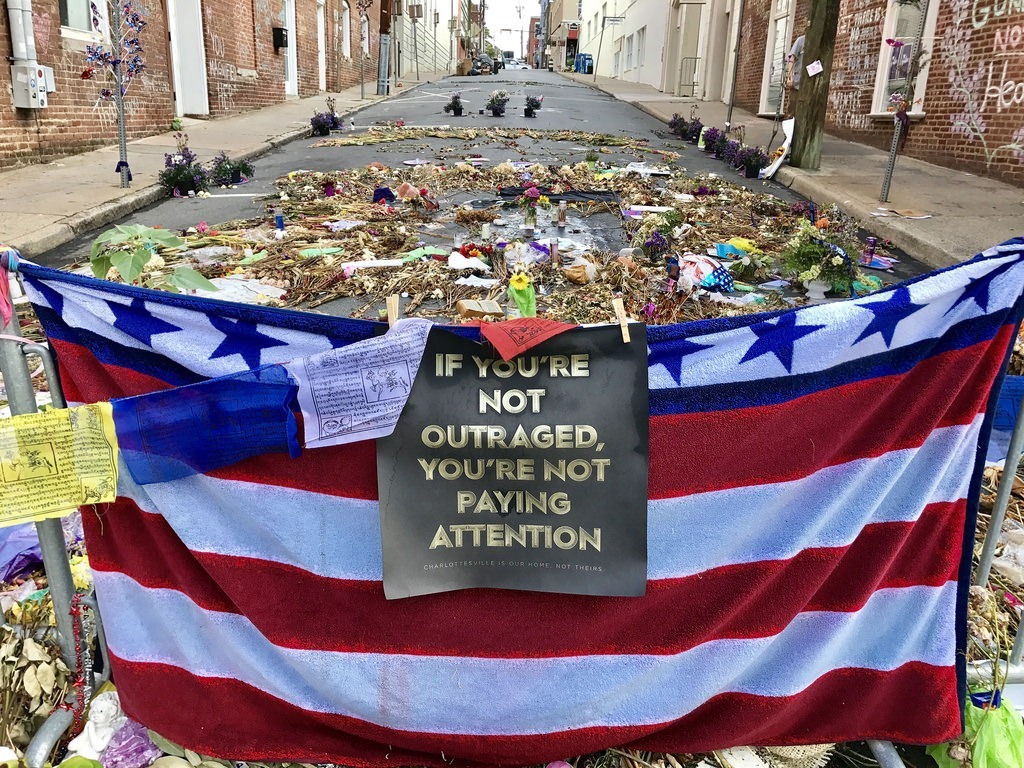
The second witness, Marcus Martin, took the witness stand after a short break. A tall man with a quiet voice, he spoke in nervous halting sentences as he remembered the fateful day. He was asked about who he was with, and he replied he was with his wife– then fiancée–Marissa, Heather Heyer and another mutual friend. They had decided the evening before to join the counter-protesters.
When asked to describe his friend Heyer, Martin paused and then began weeping, as he said, “She was a great person.”
Martin said that he, his fiancée and their two friends did not arrive downtown until about 12:30 pm, approximately an hour after the rally had been cancelled and people began to leave. Most of the Nazis and white supremacists were leaving to the west, and the counter-protesters were heading east. The large group of counter-protesters they ended up with near the intersection of 4th and Water Streets were happy, Martin said. They were celebrating the fact that the Unite the Right Rally had been cancelled.
It was when Martin stopped to look down at his smart phone that he heard the loud screech of wheels that the criminal incident happened. Martin said he had just enough time to push his fiancée out of the way when he was thrown up onto the hood of the Challenger, and he said he saw other people thrown into the air. His tibia was completely shattered, and his ankle was severely fractured. For them to heal, he had to wear a boot cast for eight months.
At about 1:20 pm, the trial stopped for an hour lunch break, and I left for my return trip home to DC.
Charlottesville Circuit Court is located at 315 East High Street. The trial is expected to continue at least two more weeks.
This report was reprinted from Inside the Belly of the Beltway Beast.

